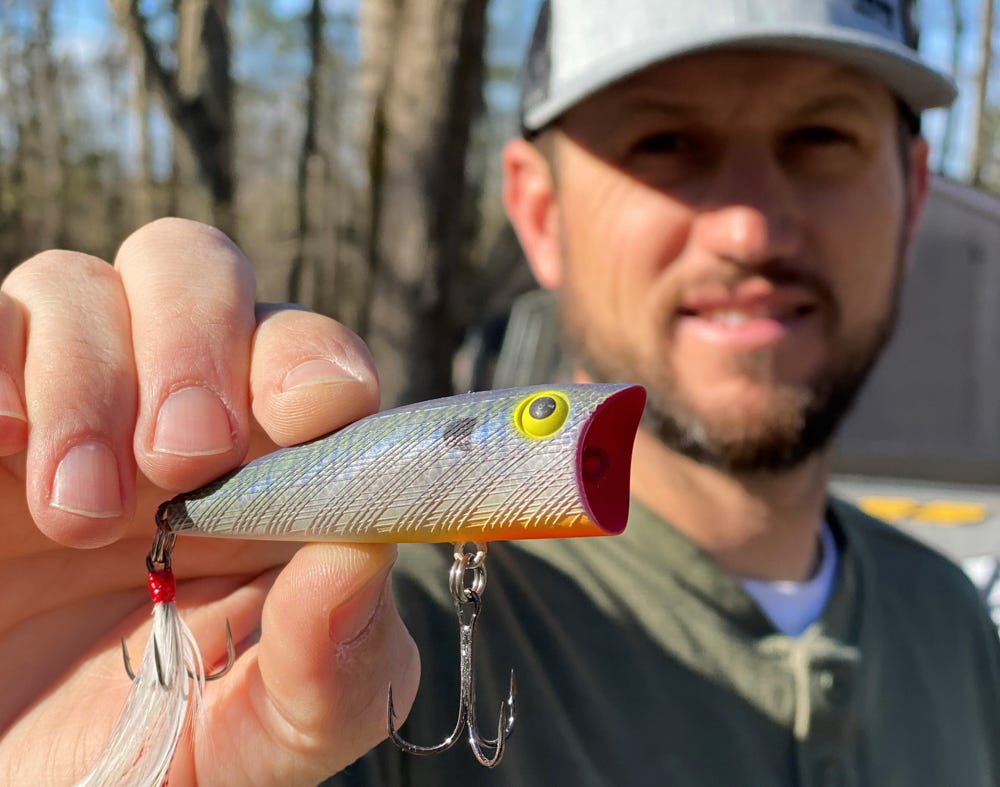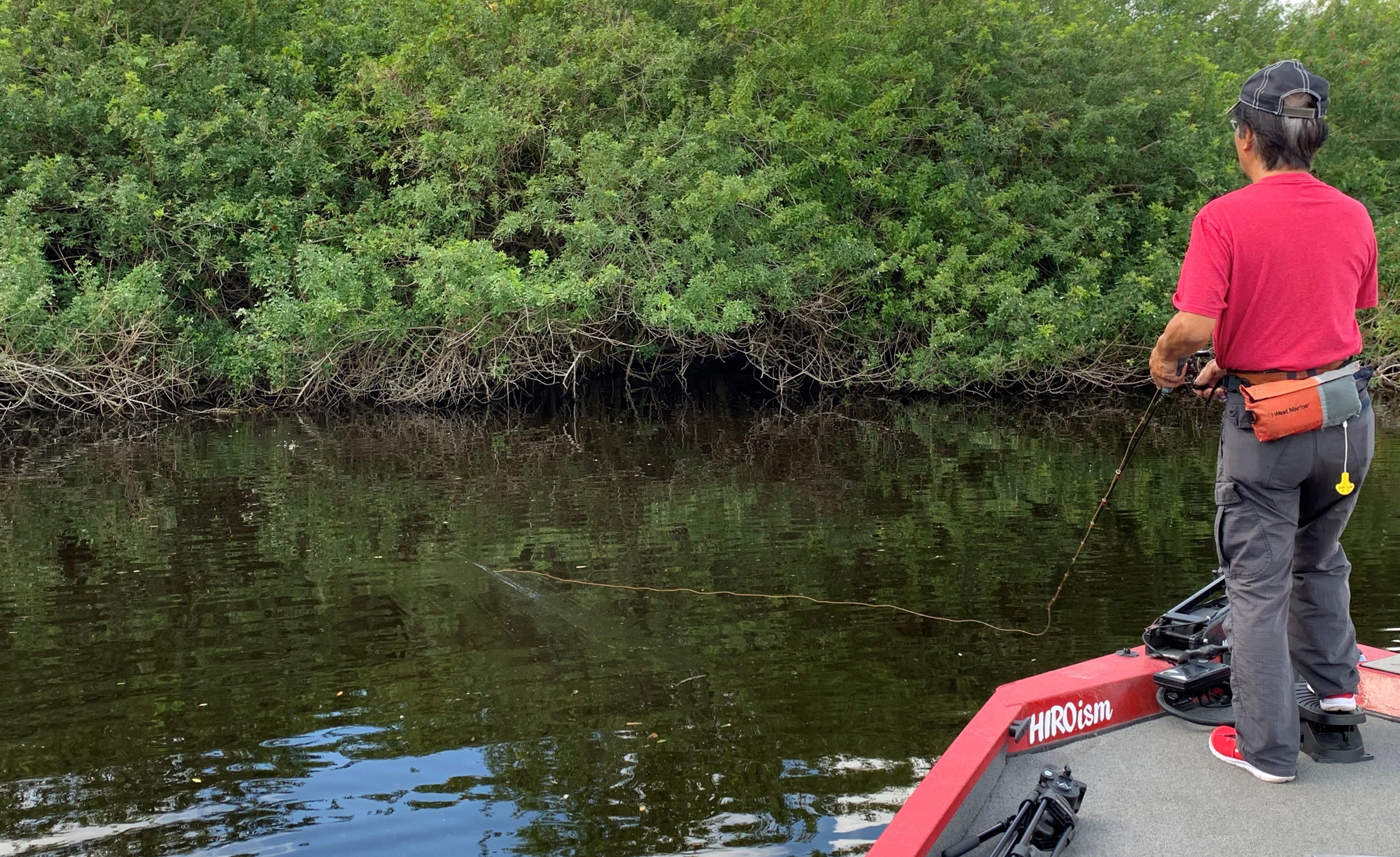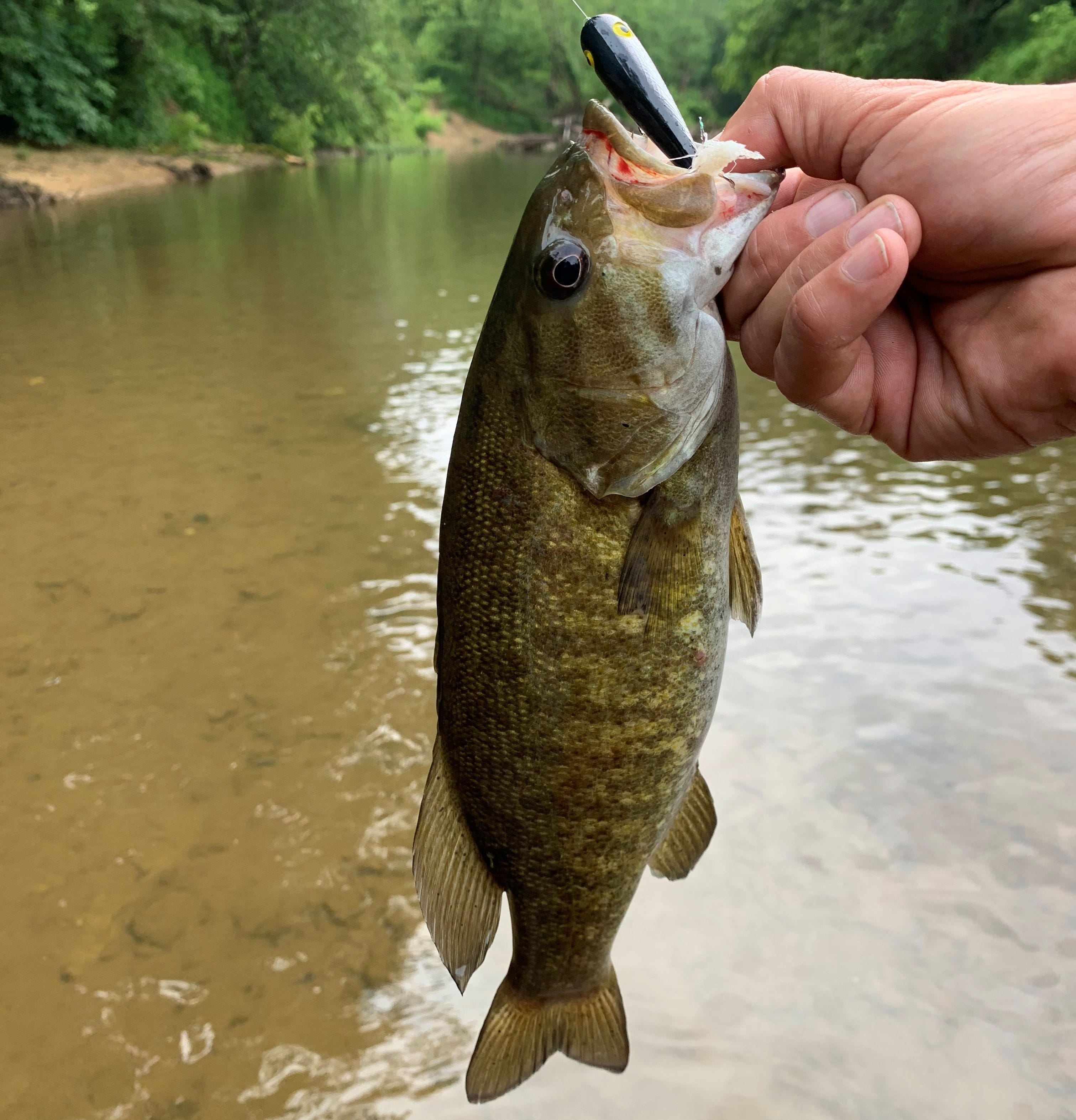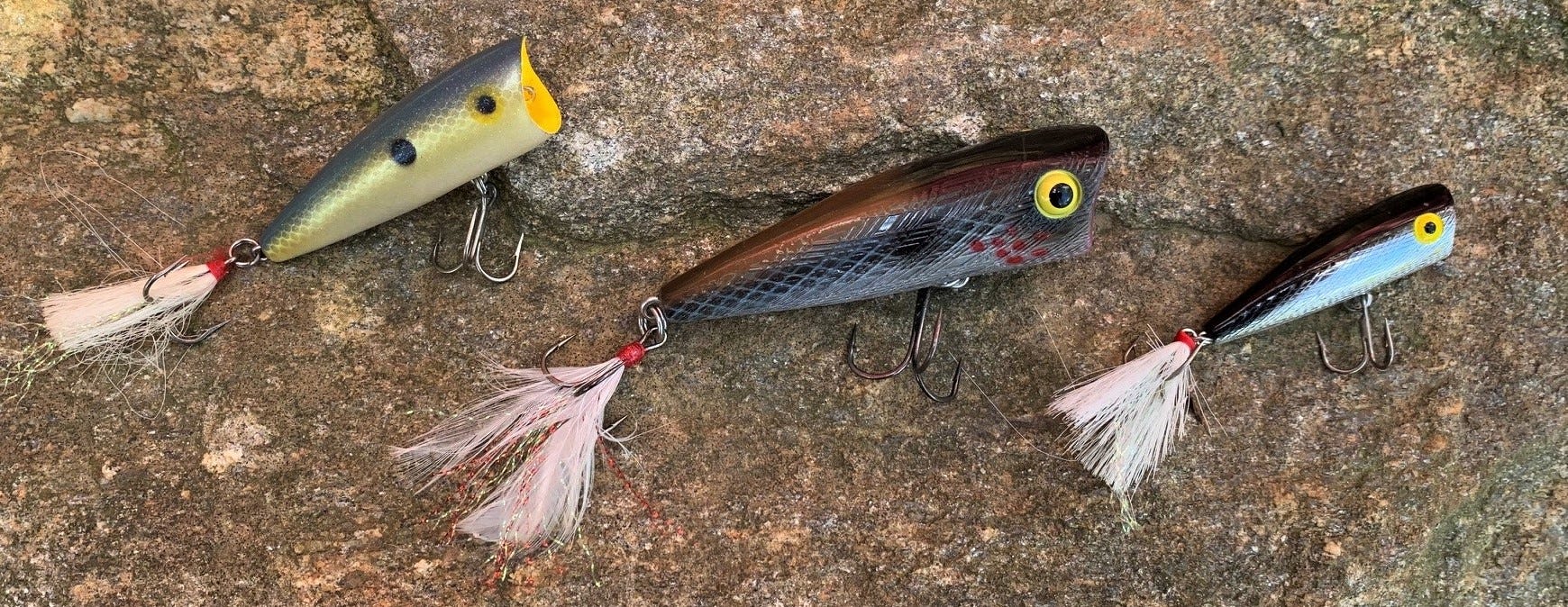- Apr 8, 2022
Topwater Fishing Strategies: How to Fish the Rebel Pop-R for Spring Bass
Spring awakens exciting topwater bass fishing opportunities, and a Pop-R is ideal for igniting the action in many situations.
Spring means different things to different people. Some think about baseball, azaleas blooming or the Masters. In the minds of many bass fishermen, springtime is Rebel Pop-R time.
Bassmaster Elite Series pro Stetson Blaylock is one such angler. He has fished a Rebel Pop-R during the pre-spawn and spawning periods for many years, and a few springs back a Pop-R delivered him 1st and 2nd place finishes in consecutive Elite Series events.
It’s not that a Rebel Pop-R doesn’t produce excellent action all summer and through the fall. It does. Spring has extra virtues that make it especially good, though, along with being the time when the Pop-R bite first heats up each year.
Close To Cover


Blaylock favors spring for fishing a Rebel Pop-R because he likes it best as a “target bait,” and now is the time when the most bass are shallow and holding close to specific pieces of cover. Whether the cover is a dock support, a stick-up or a stump, Blaylock seeks to land his Pop-R close to the cover and work it slowly, almost keeping in on place, to coax strikes.
Blaylock’s Pop-R of choice for spring bass fishing is the P71 Pop-R, which is 3 1/8 inches long, weighs 9/16 ounce, and is built from butyrate. The weight is important because he wants to be able to make highly accurate casts, often with roll cast or sidearm delivery that allows the lure to land very gently in tight spots that are close to cover. The butyrate construction is important for a low-pitched rattle and for the lure’s resting posture and action.
The P71 is generally considered the easiest Pop-R to walk side to side. That movement is important for Blaylock because when the lure pops and turns sharply that keeps it from traveling very far across the surface, meaning it stays close to the cover. He wants to make a commotion with the bait but minimize movement away from the target cover.
“I cast to a high-percentage spot and then twitch it a few times to make it walk in place,” Blaylock said. “If nothing hits it, I reel back and cast to the next target.”
If the target is a dock support or piece of wood a bass might be bedding beside, Blaylock might make several casts to the same spot. He’s not trying to cover water with presentations. It’s all about casting to specific spots where he expects fish to be and coaxing those fish into striking.
Shallow Forage


Another virtue of spring for Pop-R fishing is that many bluegills and closely related sunfish such as shellcrackers and redbreasts, move shallow and relate to weed edges, brush, docks and other cover. They move shallow both to feed on insects and minnows and to spawn.
A Pop-R worked slowly, near the shallow cover, is ideal for attracting the interest of bass that are relating to shallow sunfish of various sorts.
The shad spawn, which typically heats up just about the time bass begin moving off the beds, provides another outstanding spring Pop-R application. Bass stack up and feed heavily when shad are spawning, usually at first light, around riprap or hard-bottom areas and often atop points.
The presentation for fishing the shad spawn fish is substantially different than that of working near bluegill-inhabited shallow areas. The Pop-R should keep moving with a mix of quick snap and sweeps and the line kept tight so the bait moves forward, more so than walking. Shad-like colors, such as Silver/Black, Bone and Tennessee Shad, are the ticket for fishing the shad spawn.
Diverse Presentations


Hiro Naito, a topwater expert and host of the popular Hiroism YouTube channel, likes a Pop-R because of the diversity of sounds and actions he can get out of the same bait in order to trigger strikes from bass. Naito doesn’t believe in waiting for a fish to come along and decide bite. He is highly intentional about keeping his lure in high-percentage areas and changing up his presentations to prompt strikes.
Some fish bite because they are actively feeding. Others bite out of aggravation or strictly as a reaction. Naito has learned that bass in different moods respond to different sounds and cadences. By varying rod movements and line tightness, he can make a Pop-R walk, pop or chug, and within any of those basic presentations are wide variances in sharpness and lengths of movements and in the speed of the overall presentation.
In Naito’s mind, it’s not a question of which sound or action is best. They are all important. He uses a range of presentations every time he picks up a Pop-R rod, typically incorporating more than one in each cast.
The chug, which is accomplished with a longer, slower sweep of the rod, imitates feeding fish to get bass’ attention and cause them to orient toward the bait. He’ll often use a chug just as his bait approaches a high-percentage spot. Then he’ll pause it for a moment and pop it or walk it with a few twitches to imitate a baitfish. A fish might respond to the shorter snap of the rod tip, but the chug might have been what moved it into feeding position and got it watching the lure.
Naito seldom works a lure all the way back to the boat. He casts into tight spots and works his lure through what he considers he prime zone, and then he reels it back quickly and casts to the next target he has chosen.
Live Stream


Spring is also the time when creek and river topwater action heats up, and there’s no better way to summon stream smallmouths and spotted bass to the surface than by popping a Pop-R over shoals and gravel bars and in eddies.
Bass feeding on gravel bars or holding behind ledges in shoal areas tend to be in ambush mode, so quick presentations with a mix of short snaps and harder splashes typically produce the best results. For fish holding in shoreline pockets and in eddies along grass edges and behind boulders, patience is the name of the game. Let it rest a bit after landing and then pause it again after a single pop. Pause a little longer than you can stand to wait and be ready when you pop it again!
The original Pop-R is a good bet for many rivers, but for many moving water situations, downsizing slightly to a Teeny Pop-R will produce more fish, possibly including a mix of “bonus species.”
3 Fabulous Pop-R Models


- P60 Pop-R – The original Pop-R and the predecessor to so many popping lures, the P60 Pop-R is 2 1/2 inches long and weighs 1/4 ounce. It’s heavy enough to cast on baitcasting tackle and accounts for more than its share of big bass but is small enough to appeal to fussy fish.
- P71 Pop-R – Built in the mold of the iconic P70 Pop-R, the P71 is built from butyrate to create a low-pitched rattle and the right action. Its 9/16-ounce weight makes it easy to cast accurately. Its large profile attracts BIG bass!
- P50 Teeny Pop-R – Two inches long and weighing 1/8 ounce, the Teeny Pop-R provides a finesse option for fussy bass and is the go-to Pop-R for creek fishermen. Beyond largemouths, smallmouths and spots, the Teeny Pop-R will call up rock bass, white bass and even bluegills.
Learn about all the different Pop-R models.
Pop-R P71 Tips from Hiro Naito



